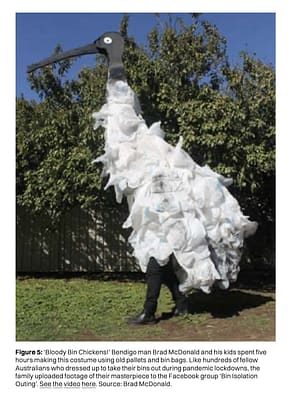“It’s Massive” – ‘Young middle Australians’ views on arts (and arts business models)
A young adult is speaking animatedly in a small group on Zoom.“It’s massive in my life…for young people, our age, it’s huge. Living in Brisbane, it’s like, if you didn’t have the arts, that would suck, and you would want to move to Melbourne.”
The 29 year old, English/Australian self-identified male is talking as part of a focus group that makes up one of twenty one Australia-wide discussions. The groups feed into the sixth research report in an Insight Series by A New Approach (ANA). ANA is a philanthropically supported, independent, bipartisan think tank working from Canberra. They examine and report on the benefits and public perceptions of arts, culture and creativity in Australia. They’re worth checking out if you haven’t got to do so already.
The Next Generation of Voters is a 106 page report, released August 2021. It captures the views of 18-29 year old, not necessarily ‘artsy’, ‘middle’ Australians who are undecided voters. It follows on from initial research with similarly categorised 35-60 year olds. That research showed that the older group deeply values arts and culture, and considers arts especially important for children and young people. (There’s an interesting table on divergence and alignment of views between age demos on pages 61-64 of the report).
WHAT ARE THE REPORT’S KEY TAKEOUTS?
The research offers findings and a variety of quotes that help strengthen the case for the importance of properly valuing the arts and making them more widely accessible for young Australians.
- Young middle Australians recognise ‘the arts’ encompass commercial, digital and integrated models connecting creativity to communication;
- They do not recognise the arts as ‘elitist’, though they do cite issues with access;
- There is a desire for more accessible opportunities to engage through cost reduction, regional access and online opportunities;
- The arts are seen as integral to generating an inclusive sense of community, with content that should connect us to a diversity of experiences, and the stories of our First Nations peoples;
- Young middle Australians implicitly understand the academic, social and personal value of arts in education, and are potentially likely to support action that ensures its place in the curriculum
For those working within arts companies, who are looking at broader advocacy messaging, there is a particularly interesting take-out from the report…
- For younger and older middle Australians, arts business models can be hard to decipher;
- Subsequently, why and how artists and arts companies should and can benefit from strong government support and policy is not clear to this group (and possibly others)
REPORT FINDING: When asked about arts income models… ‘[The research] Participants always assumed that earned income was the predominant business model, but then realised they’d never really thought about it, and now that they were thinking about it, they didn’t really know.’ This matched the older demographic, who were mostly unsure about how arts businesses support themselves.
“I think some are quite profitable and some are a bit harder, based – in terms of the industries they’re in. Yeah, it’s a bit hard to decipher though.” (SELF-IDENTIFIES AS MALE, 20, QLD, GERMAN AUSTRALIAN, COLES RETAIL)
The report concludes: ‘There is space here for cultural and creative industries, businesses and individuals to tell the stories of what they do well, where and why they need support, and who makes up the broad cultural and creative ecosystem of stakeholders in this space.’
When encouraged to think about advantages of government funding at this time ‘…advantages that participants identified fell into four main categories (in order of frequency in the discussions): stimulating economic activity, social cohesion, sustaining arts and cultural activity and improving accessibility.’
“So I guess it’s a huge part of the economy, like cinemas and restaurants and all the huge events that states put on. It’s massive.” (SELF-IDENTIFIES AS FEMALE, 24, SA, ENGLISH-HUNGARIAN, DEFENCE)
WHERE TO NOW?
Throughout the Covid crisis, arts industries have been more heavily profiled in the media (like here and here and here), and support packages have been discussed more than ever.
Now’s the time to continue these discussions. When, where and how do arts matter to Australians? How do well-considered arts policy and funding make a real difference to our arts ecosystem? Young people, and those in youth arts, potentially have some ‘massive’ stuff to contribute to this conversation.
As next year’s Federal election looms, the power of young voters remains omnipresent, particularly in light of last year’s movements in US politics. This influence will also stretch into Local and State elections, as we come to understand the true impact of the Covid pandemic on young people’s mental health, educational outcomes and community connections. Creativity is the common thread or connector for many of these issues that matter most to young people.
Moderator: “What do you think the world would look like without arts and culture?”
Participant: “Without them both? At the same time? Pretty sh*t.” (SELF-IDENTIFIES AS MALE, 18, VIC, AUSTRALIAN, TRADESPERSON)
As we imagine our way forward, into a world that isn’t sh*t, into a world that’s more sustainably creative, interconnected and ‘healthy’, arts might just be one of the key things that can help us. This would appear to be a vision that a broad range of Australians would easily and joyfully embrace.


